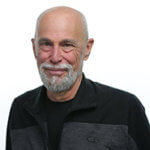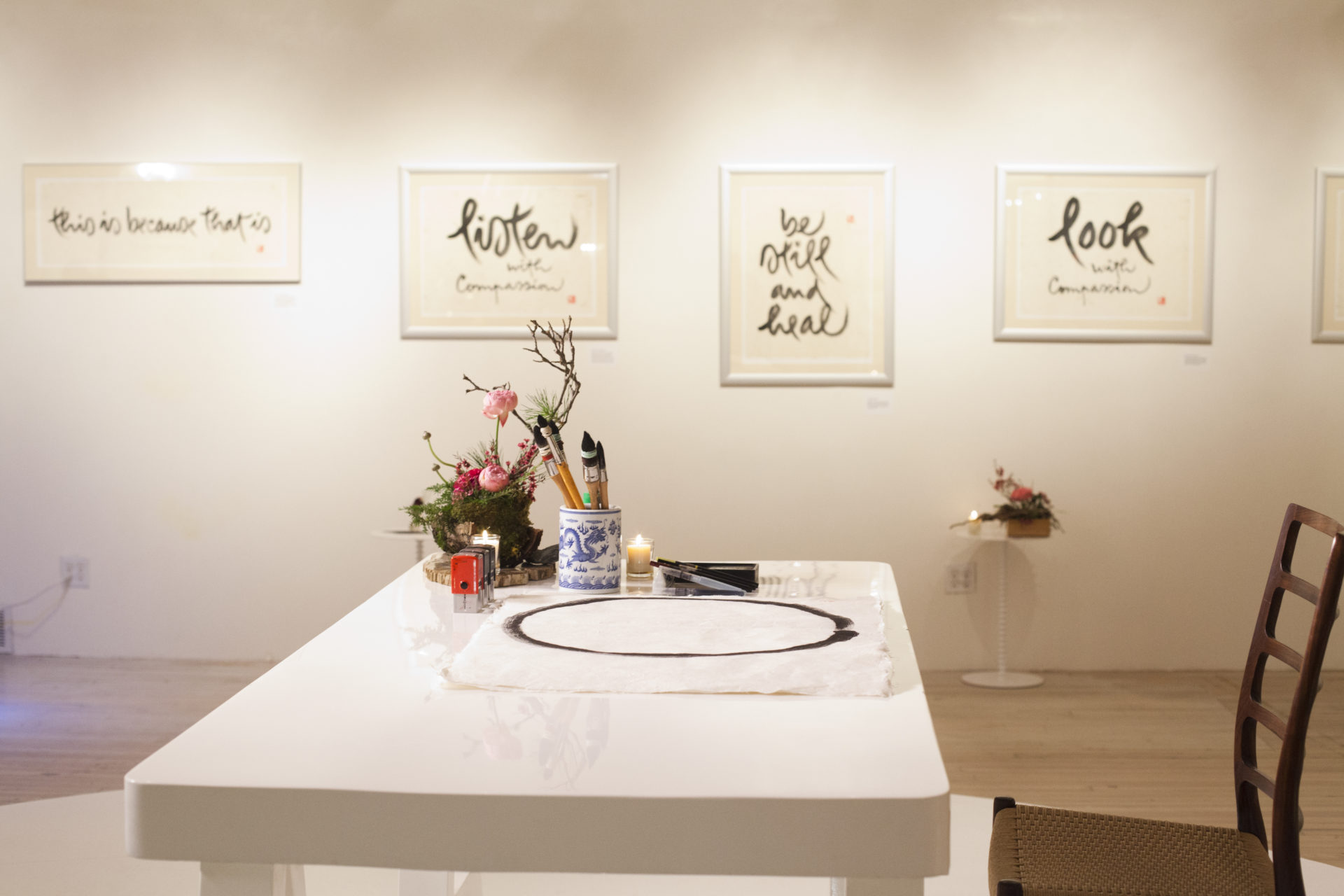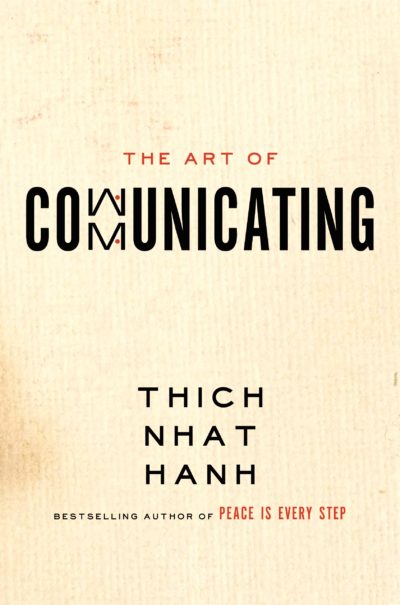
The Art of Communicating
By Thich Nhat Hanh
Hard cover, 166 pages
Harper One, 2013
Reviewed by Karen Hilsberg
The Art of Communicating contains a wealth of practical teachings and clear instructions about how to enhance relationships using thoughtful and intentional communication. In an era dominated by texting, emailing, tweeting, and posting, Thay suggests that many of us spend our time not actually communicating,

The Art of Communicating
By Thich Nhat Hanh
Hard cover, 166 pages
Harper One, 2013
Reviewed by Karen Hilsberg
The Art of Communicating contains a wealth of practical teachings and clear instructions about how to enhance relationships using thoughtful and intentional communication. In an era dominated by texting, emailing, tweeting, and posting, Thay suggests that many of us spend our time not actually communicating, and that the growing array of electronic devices (mobile phones, tablets, e-readers, etc.) is no assurance that effective or meaningful communication is taking place.
In a Dharma talk at Deer Park Monastery during the 2013 North America tour, Thay mentioned he hasn’t used a telephone for thirty years, and he happily reported that his communication with his friends and students is nonetheless rich and meaningful. Thay enjoys rich face-to-face contact and communicates through letters (not email), Dharma talks, and calligraphy. He explained that when his students are following their in-breath and out-breath and practicing mindfulness (sitting, walking, eating, deep listening, and loving speech), they are nonverbally connected to and communicating with him, because he is engaged in the very same activities.
Thay’s teachings in this book hone in on nourishing and healing communication and include specific instructions for how to reconcile with others using deep listening and loving speech when difficulties arise. My favorite chapter describes the Six Mantras of Loving Speech. These mantras “are six sentences that embody loving speech and let people know that you see them, you understand them, and you care for them. …They’re a kind of magic formula. When you pronounce them, you can bring about a miracle, because happiness becomes available right away.” Many of Thay’s students will be familiar with the fi four mantras: “Darling, I am here for you.” “I know you are there and I am very happy.” “I know you suffer and that is why I am here for you.” “I suffer, please help.” The two new mantras are: “This is a happy moment,” and “You are partially correct,” or as I’ve heard Thay say, “Yes, dear, you are right, but only fifty percent right.” In The Art of Communicating, Thay explains these new mantras and how to use them effectively.
Thay believes mindful compassion and loving communication have the power to heal us, heal our relationships, and heal the planet. He explains that love, respect, and friendship all need food to survive. He shows us how we can produce positive thoughts, speech, and actions that will feed our relationships and help them to thrive. The Art of Communicating will be a much referenced and extremely valuable how-to manual that readers can use to heal their relationships.
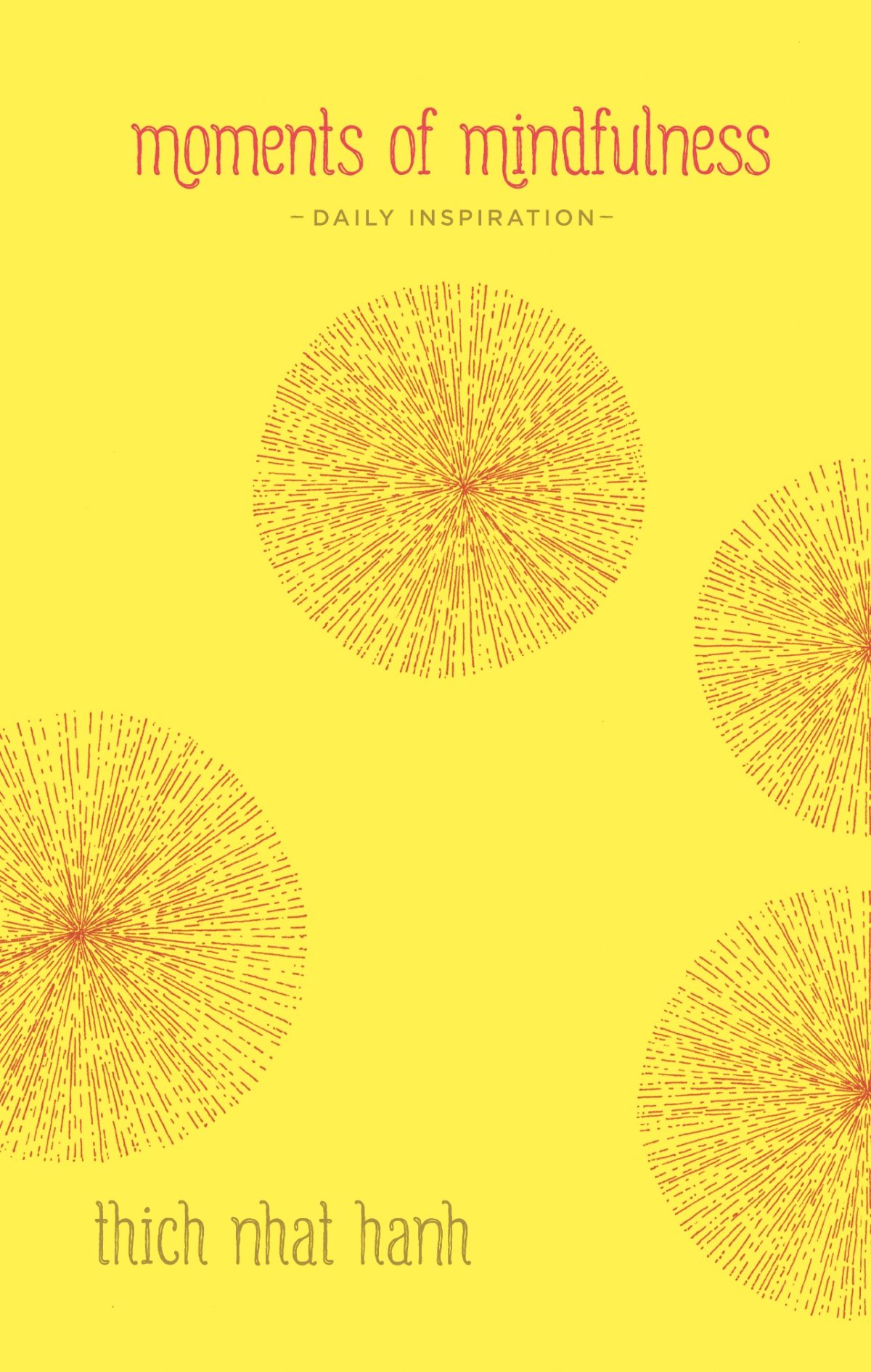
Moments of Mindfulness
Daily Inspiration
By Thich Nhat Hanh
Paper over board, 160 pages
Parallax Press, 2013
Reviewed by Gary Gach
Whenever I begin a book by Thich Nhat Hanh, I never know when I’ll be done. Sometimes years later. Sometimes never. Maybe you’ve had similar experience? You read a paragraph and—wow!—time to lay it down and ruminate. Digest. Contemplate. Understand. Make it real for yourself.
Moments of Mindfulness places Thay’s masterly way with words under a magnifying lens. It serves up fifty-two compact, fresh, nourishing, breath-sized Dharma morsels. Seven to seventy words, no two are alike. Peace is every word. All in all, they whisper, nudge, sparkle, startle, sing, embrace, liberate. Peace, too, is in the spaciousness surrounding the words.
On the cover and throughout, the book is illuminated by patterns of movement and growth drawn by Jenifer Kent. At the outset is a poem that’s also a guided meditation, nurturing the compassionate, correct view necessary at the beginning of the path. It’s followed by eleven pages by prolific Rumanian author Richard Reschika, outlining the rudiments of mindfulness. This preface includes a gatha by Thay, encapsulating the Sutra on the Full Awareness of Breathing. At the back, there’s a built-in notebook. In the center: Thay’s fifty-two gists and piths.
A single breathful of mindfulness can overcome the absentmindedness of 10,000 forgettable moments. It doesn’t take a wheelbarrow––sometimes just a thimbleful will do. Remember ancestor Hui Neng’s enlightenment, on the spot, hearing but one line from the Diamond Sutra. As contemporary, daily inspiration, such diamond-bright moments can provide the clarity that lends consistency to your conscious living and loving. As you approach a new obstacle or threshold, the reminders, landmarks, celebrations in this book can help see you through.
Mindfulness is more than calming: its compassion awakens insightful, transformative wisdom. Given the cynical and painfully dwindling attention span of our times, it’s an effective homeopathic remedy. Thay’s mindful moments are succinct postcards from our true home. We’re already in the divine kingdom, the pure land. Nirvana isn’t on the way. It is the way.
This book is a gift for the preservation of all beings, including adepts, those just setting out on the path, and those who don’t yet know it is available. The initials of the book spell MOM. These mindful moments give birth to us all.
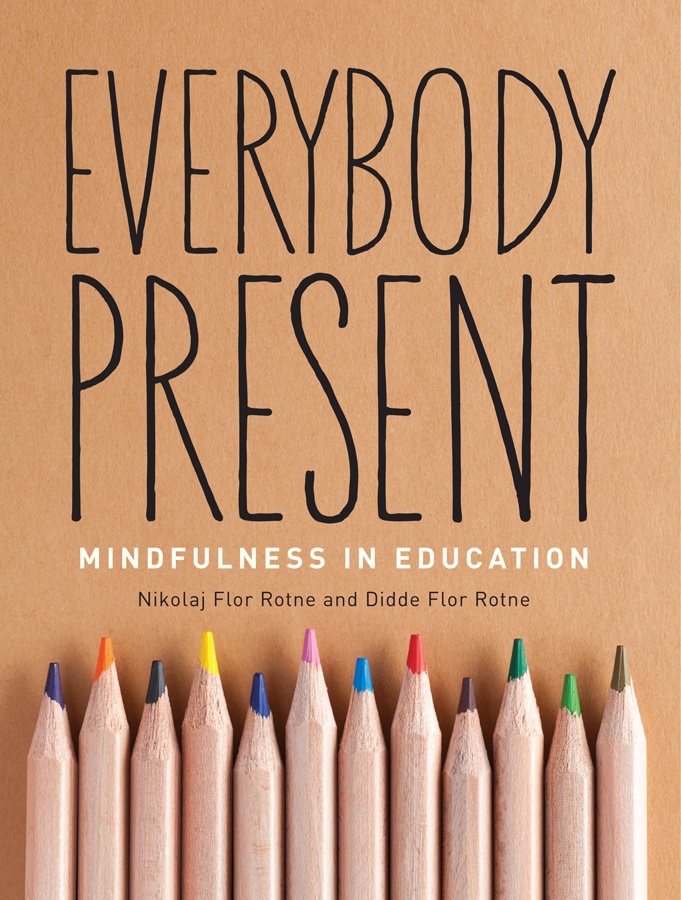
Everybody Present
Mindfulness in Education
By Nikolaj Flor Rotne and Didde Flor Rotne
Soft cover, 141 pages
Parallax Press, 2013
Reviewed by Sandra Diaz
Everybody Present: Mindfulness in Education is a how-to manual designed for teachers who want to bring mindfulness into the classroom. It begins by briefly recounting the story of the school shooting in Newtown, Connecticut, and the response of a monastic who lived near the school as a child. He explains: “As a community we need to sit down and learn how to cherish life, not with gun-checks and security, but by being fully present with one another, by being truly there for one another.”
Given the myriad challenges currently facing our educational system, how can educators create the conditions for a healthy classroom environment that can nourish our children and our society? The book aspires to answer the question of how teachers can fulfill “their ideals without being crushed by them” in order to “show the next generation a path toward a good future.”
Since experiencing mindfulness is key to understanding it and teaching it to others, the book contains basic practices for educators to become more mindful. Once educators begin to realize some of the benefit themselves, they can begin to introduce the concepts in their classrooms. The book contains examples of practices for children, such as paying attention to their breath, walking meditation, and sharing gratitude. One of my favorite practices, called “eating the raisin,” encourages students to trace all the people involved in the making of a raisin, then draw a picture of one of the people in the cycle, and end by mindfully eating their raisin.
The book’s appendices will be helpful to those who like to know the science behind mindfulness. Topics include the physical symptoms of stress, how to manage heart rhythm in order to decrease stress, how different parts of the brain react to stress by releasing hormones, and how our neurons help to connect us to other beings.

Everybody Present weaves children’s stories, neuroscience, social science, case studies, and practical exercises for educators and students. The authors emphasize the need for teachers to cultivate their own inner peace in order to manage their classrooms wisely and compassionately. As Thay has said, “Happy teachers will change the world.” Everybody Present provides tools that can assist those in the field of education to work through the daily and larger systemic challenges found in many classrooms and schools, and to cultivate stillness and grace that can serve as an example to other teachers, principals, parents, and children.
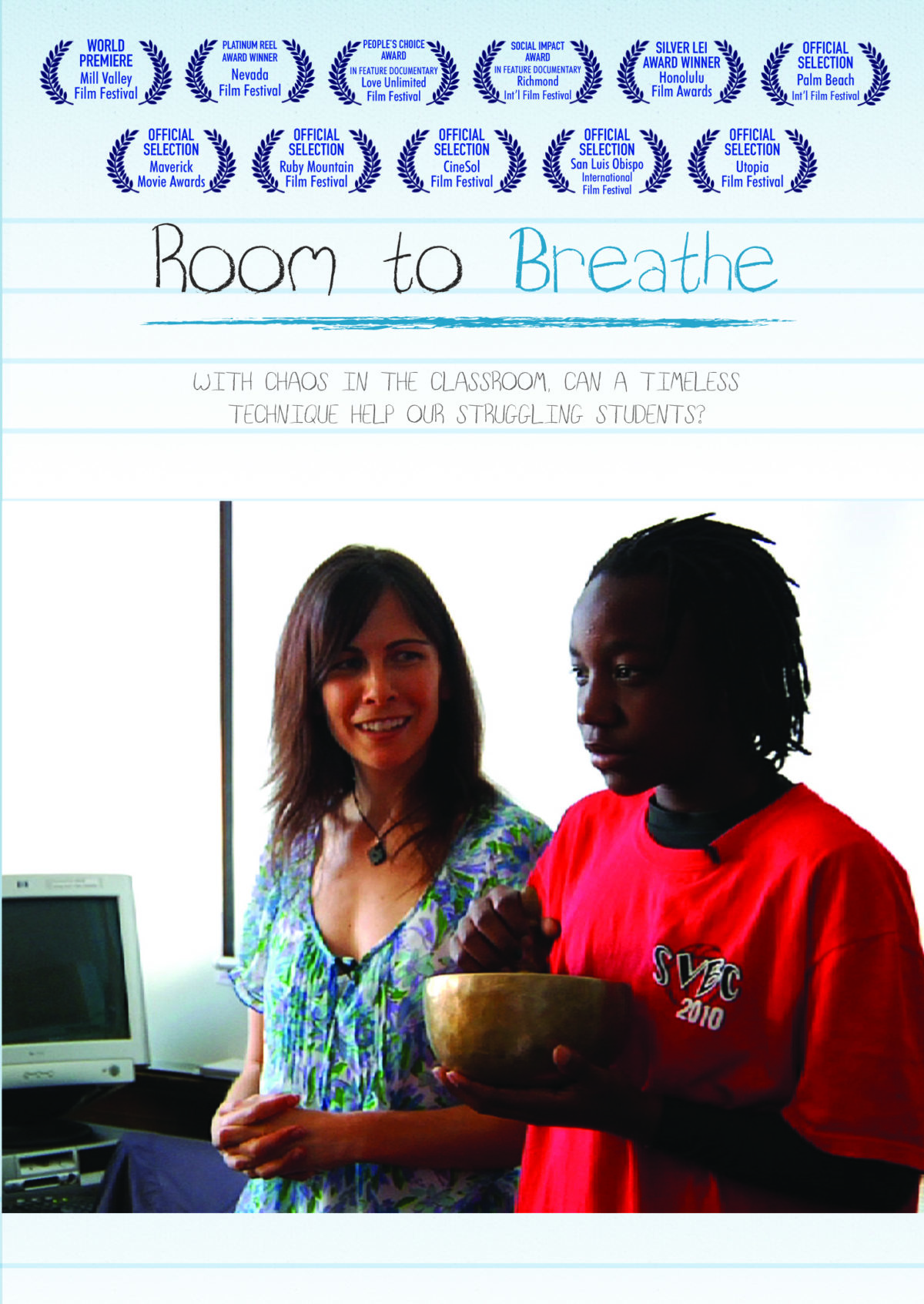
Room to Breathe
Produced and directed by Russell Long
Sacred Planet Films, 2012
DVD, color, 55 minutes
Reviewed by Ambrose Desmond
Room to Breathe is an inspiring new documentary about bringing mindfulness practice into schools. The film follows Megan Cowan, a trainer and the Program Director of Mindful Schools, as she works with one San Francisco middle school class. Room to Breathe begins by exploring the classroom and the academic and behavioral challenges of the students in that class. Through interviews with the teacher, the students, and their parents, the film profiles the particular challenges of a few individual students.
At the beginning of the film the portrait is not a hopeful one. Parents and teachers are trying unsuccessfully to motivate the students toward better behavior and engagement at school. The film clearly shows what a challenge it would be to make a significant impact in the lives of these students.
When Cowan arrives in the classroom, her first visit is nearly a failure. She is white, while most of the students are African-American and Latino, and the cultural distance is glaring. Many of her early struggles in connecting with the students seem to result from a lack of cultural competence. Yet over time, she builds authentic relationships with most of the children. One of the real strengths of the movie is that it presents a realistic picture of the challenges associated with trying to create change in a difficult classroom. During one scene, Cowan asks the students, “Who doesn’t want to participate in the mindfulness practice?” Most of the students raise their hands. However, through creative classroom management and truly admirable persistence, that dynamic undergoes a profound shift.
By the end of Cowan’s time with the class, most of the children seem engaged in the mindfulness practices. Some of them describe how they use mindfulness practice to control their impulses and make better choices. While this program is not portrayed as a panacea, it’s clear that some of the students have been profoundly affected by mindfulness practice and have integrated it into their lives. Because the film does not shy away from Cowan’s difficulties, it makes her obvious impact on the children even more inspiring. Room to Breathe is well made and highly engaging, and I believe that anyone interested in how mindfulness can transform society would enjoy watching this film.
Room to Breathe is available for community screenings and house party screenings. The filmmakers wish to encourage post-film discussions as a first step toward implementing mindfulness in schools. For information about hosting a screening, visit roomtobreathe.
